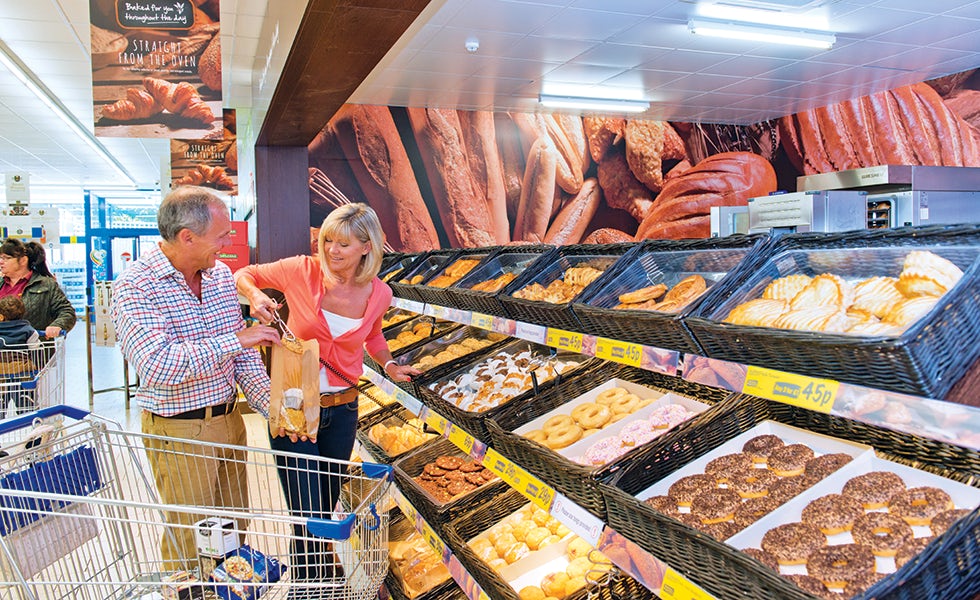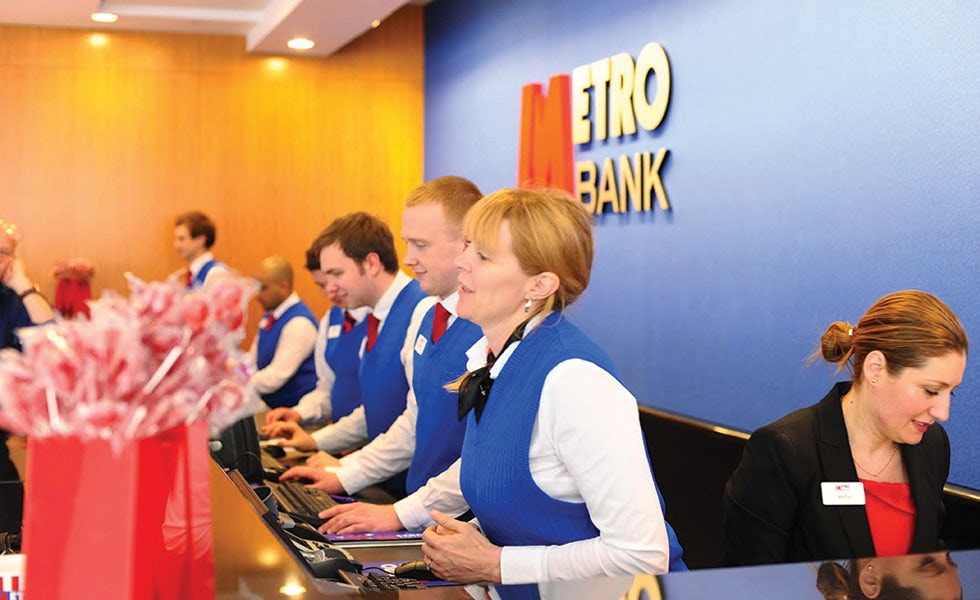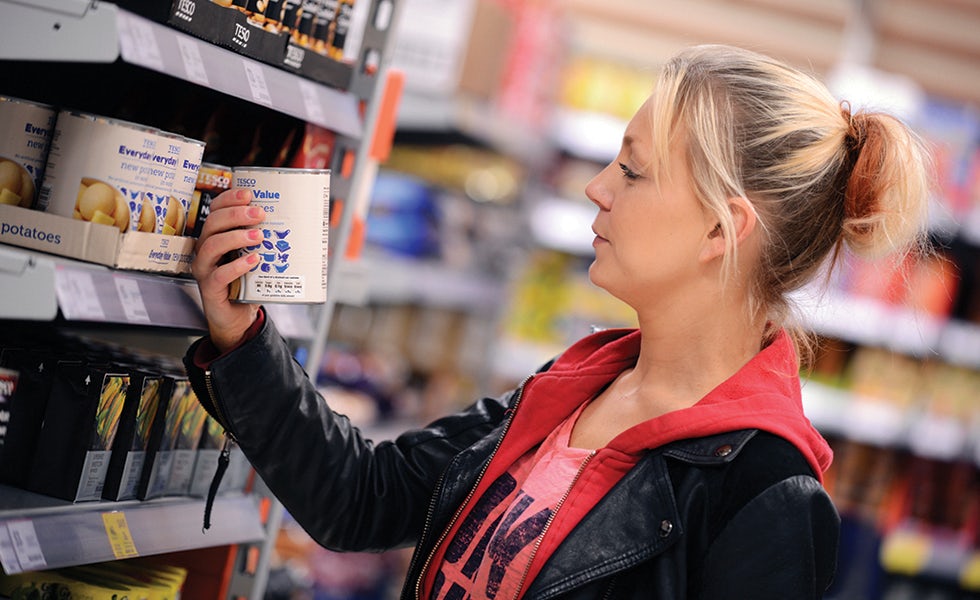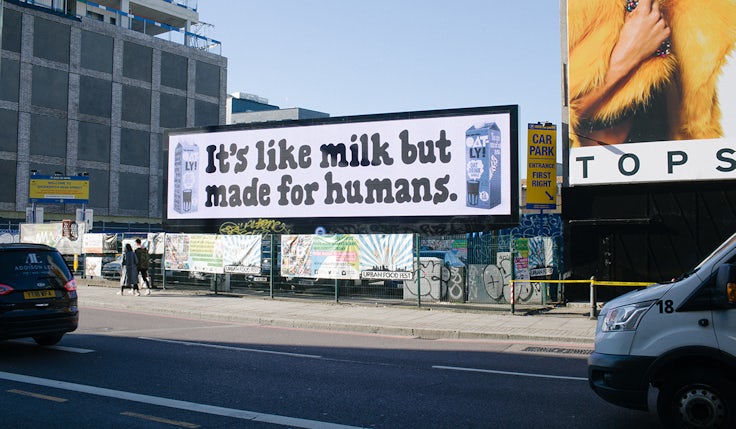The power of disruption
Small and shrewd emerging brands are taking on big names and shaking up markets that seemed set in stone. But can established companies use these newcomer tactics to their own advantage?

Also in this story:
In the fight for consumer attention and loyalty, big brands in energy, groceries and financial services are seeing upstarts threaten their very existence in a war on price, convenience and customer service. The new disruptors take advantage of new technology and the loosening of regulation – and could be as much of a threat to the incumbents as low-cost carriers were to established airlines a decade ago.
The large supermarkets are losing market share to smaller discounters such as Aldi which has seen a record 36.1 per cent growth in the 12 weeks to 27 April, while government statistics show the numbers of people switching gas and electricity shot up 43 per cent and 34 per cent respectively between the end of 2012 and 2013.
Meanwhile, 2.4 million people changed their current account provider in 2013, and campaigning organisation Move Your Money expects the figure to double this year.

Challenger brands in the financial services industry are aiming to offer consumers a choice away from the big high street brands in terms of convenience and benefit. Metro Bank, for example, has seen the value of deposits go up 131 per cent to £1.6bn in the year to 27 March.
Since banking rules were relaxed last year, the Prudential Regulation Authority, which grants bank licences, has received around 20 applications for new services, including one from Anthony Thomson, founder and former chairman at Metro Bank, who is planning to set up an online and mobile service called Atom Bank, which will have no physical branches.
When Metro Bank launched in 2010, its aim was to have 200 branches in Greater London in 10 years but it only has 26, which suggests it is going to miss its target. The proposition is around service convenience, with stores open seven days a week and phone lines 24 hours a day. But chief executive Craig Donaldson is upfront about its role versus the larger brands.
“Of course we face competition from traditional banks, but for me it is about knowing what you want to deliver,” he says. “We are very clear that our model is about service convenience; it’s to be there to support customers and to grow with our customers.”
However, in the latest Brand Audit Valuator research by agency Rainey Kelly Campbell Roalfe/Y&R, the bank had a 26 per cent reduction in its ‘perception of trust’ scores, according to a survey of 3,000 consumers. It also came in the bottom 15 of 665 brands it surveyed suggesting that Metro Bank has not shaken the market up as much as it promised.

Thomson himself says the world has moved on since Metro Bank launched, telling The Telegraph last month: “The rate of change in mobile in particular has just been so fast that opening a bank with bank branches would be like BT putting telephone kiosks back on the high street.”
Indeed, consumers seem to view new physical banks in a negative light, with only 26 per cent of people who would welcome an increase in the number of new brands saying they would consider switching to one, according to research from Weber Shandwick.
Thomson claims that Atom Bank, pending regulatory approval, will offer a ‘real alternative’ to high street banks as it will serve people online and via mobile only.
Better service

Adopting some of the strategies of the challenger banks is seen in a positive way by larger brands – publicly, at least. “Where [challenger brands] do good things we would always learn from that, and actually people see that disruptive force as a good thing,” says Nationwide head of customer marketing Alex Bannister (see Q&A below).
Bannister also says that Nationwide, as a mass-market brand with 15 million customers, considers what challenger brands offer to be niche.
“We focus on doing what we should do and doing it well. Of course you look at what is happening in the marketplace but we concentrate on giving great service.”
Meanwhile, Barclays marketing director Sara Bennison says: “There is more competition than ever for services that were traditionally supplied by just a few high street banks. That’s a good thing for customers and it’s also a good thing for us as it ensures we are focused on giving customers really compelling reasons to stay with us and we are confident that we have a constantly growing number of those.” Indeed, despite a general distrust of banks since the financial crisis, some established brands are seeing positive perceptions return.
NatWest came second in a study by consultancy Lippincott that looked at banks that care about customers, share their values and have personality, suggesting that its ‘Helpful Banking’ strategy is working.
Yet, peer-to-peer lending is also seeing growth. Zopa, launched in 2005, has lent £520m, has 55,000 active lenders and 130,000 customers. Its chief executive Giles Andrews says: “ We grew faster this year than the year before. We want to continue to accelerate that growth and we think that comes about through the exponential effects of further word of mouth as news spreads.”
Zopa raised £15m in equity at the start of the year, some of which it will be using to build awareness of the business.

For supermarkets, the smaller challengers are clearly disrupting the market. The current price war ramped up a gear last week with Tesco launching ‘pound zones’ in a bid to get share back from the discounters. While the big four declined to comment on the threat from these smaller players, Tony Baines, managing director of corporate buying at Aldi, says: “The demographic profile of the Aldi customer has expanded as positive word of mouth spreads. The Aldi way is about always offering shoppers quality products at the lowest prices, they are shopping with us because we save them money every week.”
Aldi’s Swap & Save campaign actively challenges people to swap their regular supermarket for Aldi. The brand also won Which? Magazine Supermarket of the Year in 2009, 2012 and 2013.
Energy challengers
The energy market is also seeing a shift, particularly after price hikes last year. “The energy market has come under fire for the stranglehold the big six energy firms have,” says Archna Luthra, clubs manager at MoneySavingExpert.com (see viewpoint below). “The market has been broken for some time because of this, with competition constrained, but the smaller players are fighting back.”
Earlier this year, industry watchdog Ofgem announced it would be forcing the country’s biggest providers to reveal their wholesale generation prices to independent suppliers up to two years in advance in an attempt to make it easier for smaller energy players, which purchase their energy from the likes of British Gas and E.ON, to resell gas and electricity on to customers at more competitive rates.
“Where challenger brands do good things we would always learn from that, people see that disruptive force as a good thing”
Alex Bannister, Nationwide
Charlie Smith, marketing director at Bristol-based energy company Ovo says: “The public narrative that is going on at the moment is helping us, but we are in a different position in that we have had to go out and get every single one of our customers.
“It’s now about us trying to drag them away by saying ‘you are not getting treated well and you are probably paying more than you should’, and it’s working to a certain extent: we are seeing a significant swing of those people that are switching to smaller suppliers.”
In February, Ovo had 174,000 customers but after a brand campaign launch and simplifying its tarrifs, its customers rocketed to 320,000. The company has a target of 1 million customers by 2017.
Sustainable acquisition
These customers, however, need to be acquired in a “sustainable way”. Smith says: “You don’t want to create that not-so-virtuous circle where you are investing aggressively to grow but not investing in your business.
”We need to invest in people, great service and critically the big differentiator is technology, because that is the enabler that will allow people to engage and interact with their energy devices and appliances; that is where you can get a big jump on the big six.”
Ed Kamm, chief customer officer at gas and electricity firm First Utility believes that the challenge is “as much one of consumer engagement as it is about going up against the bigger players.”Going up against the big players, who hold 95 per cent of the market share with many customers inherited from the regional energy boards that existed before privatisation, is not the only challenge faced by the new players.
Kamm says: “Research from Ipsos Mori suggests that as much as 60 per cent of the population have never switched. Despite the savings on offer for many if they did switch, the number of people who switch supplier is low. The biggest challenge is to encourage people to switch and save.”
This is echoed by another challenger brand, Good Energy. Its head of marketing Martin Saunders says: “The additional complexity within energy is around the inherent apathy of consumers when it comes to switching supplier.”
The brand believes this will change. Saunders says: “We were set up to change the energy market and one of the ways we do this is by offering a genuinely different proposition. Interestingly, we are beginning to see a shift in behaviour as consumers become increasingly disenchanted with the big six.”
Technology for differentiation
Technology also plays a role in differentiation. Research by The Bio Agency shows that 79 per cent of consumers want to interact with their energy provider online and also rate mobile as the preferred digital communication tool, with a quarter of customers wanting to interact via a mobile app and a third (33 per cent) choosing a mobile app as their preferred method to submit their energy reading.
In addition, over half of consumers (51 per cent) would consider switching provider if offered digital tools to help service their accounts and save time and money; such as easy-to-read bills and speedy response to enquiries via email and mobile channels, compared with just 18 per cent who would switch if offered fixed rate tariffs.
“We were set up to change the energy market and we do this is by offering a genuinely different proposition”
Martin Saunders, Good Energy
For First Utility, which has 440,000 customers, using innovative technology helps lower costs which keep prices for customers low, but it also helps deliver insights to customers by being smart about data. Kamm says: “This helps customers become more informed about their consumption and drive down energy wastage, further reducing their bills and keeping them more engaged.”
What is clear is that differentiation is not always about price, it is about service. What the disruptors lack in customer numbers they make up for in ambition and a focus on consumers, particularly in the vital area of new technology and convenience. The established brands could learn from taking on a challenger mentality if they want to retain customers.
Viewpoint: Archna Luthra
Clubs manager at MoneySavingExpert.com
The energy market has come under fire for the stranglehold of the big six energy firms. The market has been broken for some time because of this, with competition constrained, but the smaller players are fighting back.
Small firms First Utility, Ovo, Flow and Extra Energy have sparked a price war and all have been tussling to own the trophy for cheapest tariff recently.
In the past month, we have seen over 50 per cent of MoneySavingExpert’s Cheap Energy Club members switch to smaller providers outside the big six, showing they’re making waves, although some people are wary of switching to a new, unheard of provider.
In banking, it’s the challenger accounts that are winning on rates and innovative products as well as service. Some of the high street giants continue to let their account holders down with poor service.
With current accounts, customer service really counts due to the day to day interaction people have with their banks. Our Bank Service Index shows First Direct outshines the ‘big five’ high street banks here.
The key with all the areas above is people should ditch and switch. Don’t assume the big players win on rate or service and loyalty rarely pays.
This year’s big disruptors
We are now in an era of ‘Big Bang Disruption’ say Larry Downes and Paul Nunes in their new book of the same name.
“The new disruptors attack existing markets not just from the top, bottom and sides but from all three at once. By tying their products to the exponential growth and falling costs of new technologies, their offerings can be simultaneously better, cheaper and more customised. Not just for one group of users, but for all (or nearly all) customers. This isn’t disruptive innovation. It’s devastating innovation.”
The authors cite several brands that are poised to disrupt more established players, such as TaskRabbit, that helps people get odd jobs done, Airbnb, the platform for room rentals and car sharing service Zipcar (now owned by Avis). Education providers, they point out, are seeing their institutions threatened by online players, most famously the Kahn Academy, which ‘rejects the classroom paradigm altogether, promoting instead an interactive problem-driven learning model’.
All of these challengers are not being formed ‘top down’ by marketers or brands but by consumers. Of education the authors state: “The winning standard seems likely to be driven by consumers, who are unburdened by the philosophical angst of their incumbent providers… the existing university supply chain has evolved little since the Middle Ages.”
How to act like a disruptor
- Consider starting an innovation lab as John Lewis did with its technology incubator, aimed at identifying and developing technology innovations in retail.
- Exploit the power of word of mouth. This is a key growth tactic for peer-to-peer lending company Zopa as it builds awareness.
- Offer consumers digital means to access and analyse their accounts. In the energy sector, research by the Bio Agency finds that over half of customers would switch providers if offered digital tools that enabled speedier and easier service.
- Have an always-on approach to customer service, for example, Metro Bank stores are open seven days a week, and phone lines are open 24 hours a day.
- Shout about differentiation so consumers can distinguish between competitor brands. For example communications from Good Energy shows its electricity comes from local, natural sources such as wind farms.
Disruption in social media
Below is a breakdown of social media analysis from HootSuite, which shows that when it comes to social media mentions and impressions the established brands come out top, but the disruptors are winning in positive sentiment. The analysis looks at data for one month starting from 10 April.
Banking
In banking the top five brands by mentions are HSBC (11k), RBS (11k), NatWest (990), Metro Bank (100) and Tesco Bank (83). However, looking at overall sentiment Zopa achieves 30 per cent positive sentiment followed by Metro Bank (17%), NatWest (16%), Barclays (3%) and HSBC (2%).
Groceries
In grocery the analysis is a mixture between the big four and the disruptors. The top five by mentions Tesco (284k), Asda (172k), Aldi (61k), Morrisons (13k) and Lidl (11k). In overall sentiment, Sainsbury’s comes out top at 20 per cent positive sentiment followed by Aldi (18%), Lidl (17%), Tesco (16%) and Asda (15%).
Energy
Finally the energy sector, which in general is low on mentions overall, shows the top five by mentions as British Gas (620), Good Energy (333), E,on (231), Npower (226) and First Utility (214). Over sentiment shows Good Energy comes out top at 27 per cent positive sentiment followed by Edf Energy (22%), Ovo Energy (12%), E.on (11%) and First Utility (2%).
Q&A Alex Bannister: Head of customer marketing at Nationwide

Marketing Week: How do you feel about the threat from disruptive brands?
Alex Bannister (AB) : Most of the growth is still happening in the traditional banks and day-to-day most of our challenges come from people on the high street. Where they do good things we would always learn from that and actually people see that disruptive force as a good thing.
We are bigger than them but we have the same approach: if there are things that our customers tell us we should be doing, we will listen and do those. Some of the things they do are quite niche, but the intent to listen and do the right thing which some of them have, we’d be very much in line with that approach.
MW: How have the rules making it easier to switch affected the business?
AB: There is more confidence in the process of switching now, but it’s still a big exercise for people. The trigger is still their own happiness, so you have to keep them happy and that is what we are about because our customers own us. It’s the key difference in a mutual – the customers get our attention.
MW: What is your biggest challenge in terms of customer retention?
AB: The main challenge is to make sure that customers are satisfied with the proposition and service they get from us. That’s critical in banking because that is the trigger for people to consider moving providers.
It’s about customer service and doing the right thing for customers, while it’s a long-term exercise it’s the most valuable effort that we put in to make sure we retain those customers.
MW: How does the business know that it is doing the right thing for consumers?
AB: We have a number of listening posts that we worry about and they can feed directly into the business, for example, through service tracking and customer panels. There is no barrier in the organisation to changing things: we work hard to make sure those conduits to the voice of the customer are open. It’s very easy for them to get blocked and for this stuff to not go up to a senior enough person to allow change.






